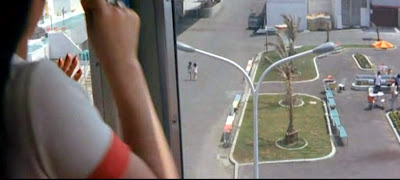Weill wasn’t the first or the last Wall Streeter to deal with the pressures of high finance through the performance-enhancing highs of cocaine or with plenty of other stimulants. Just six years earlier, one of the Street’s best-known, self-made stars, Wardell Lazard, the head of his own investment firm, died naked and alone in a Pittsburgh hotel from an overdose of vodka and cocaine, just two weeks before his 45th birthday. (…)
A University of Southern California researcher, who was once herself a Wall Street banker, followed more than two dozen freshly minted MBA’s from the boot camps, or “grind mills,” of investment banks as they clawed their way toward wealth and absolute power. By the fourth year in business, they had succumbed to a litany of out-of-control behavior.
“People working 120 hours a week, for prolonged periods of time, go through harsh psychological transformations,” says Alexandra Michel, a professor at USC’s Marshall School of Business, who findings appear in the current Administrative Science Quarterly. (…)
Her research examines how organizations influence white-collar workers’ psychological processes and performance. She is particularly interested in the way knowledge-based workers—not just on Wall Street, but in the media, law, consulting, technology and countless other fields—perceive themselves as autonomous, but in fact they are under unspoken organizational control.
That control is veiled by the perqs offered to white collar workers. “The bank erased distinctions between work and leisure by providing administrative support 24 hours a day, seven days a week, encouraging leisure at work, and providing free amenities, including childcare, valets, car service, and meals,” Michel writes. “Some of the banks’ embodied controls focused on managing employees’ energy and included providing free caffeine and meals during ‘‘energy slumps,’’ hiring young people, focusing on energy as the main hiring criterion, and firing low performers because of their energy drain.”
As they became overtaxed, 80 percent of Michel’s workers said they were struggling to control their bodies. As one vice president put it: “I wouldn’t call it control; I am at war with my body.” They were also at war with their private lives. Michel saw highly educated and highly motivated people willing to miss a child’s birthday or cancel on parents visiting from overseas to instead help with a client’s hostile corporate takeover.
To cope, bankers developed addictions and compulsions, such as eating disorders, as well as embarrassing tics, such as nail biting, nose picking and hair twirling. Normally mild-mannered people flew into out-of-control rages at the least provocation. (…)
To maintain their performance, bankers pushed harder, trying to reassert control over their bodies, writes Michel: “One banker combated her eating disorder by fasting and exercising more, training for a marathon even after midnight.” Bankers sought distraction through compulsive shopping, partying and watching porn to counteract the numbness (‘‘I need something to feel passionate about”), to achieve control (‘‘These are all ways to control something’’), and to escape (‘‘It is a way to escape, so that I cannot even ruminate about my problems if I wanted to’’).
Addiction and self-flagellation went hand in hand. One banker said, ‘‘The only way I can keep myself up nights in a row is through a mix of caffeine pills and prescription meds.’’ She even ignored serious injuries to her body. ‘‘I fell on my way to a meeting,” she recalled for Michel. “The leg changed color and I had pain but I chose not to think about it until after the meeting.’’ Her leg was actually broken in two places. (…)
High-finance intervention specialists, like Curry, have seen an uptick in drug abuse on Wall Street since 2008. It’s not necessarily because these guys are stressed. Just the opposite: It’s because many of them are bored.
{ The Fix | Continue reading }






















